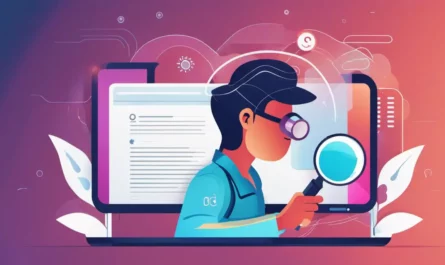Contemplating the marvels of modern technology, one cannot help but wonder at the ingenious developments taking shape within the realm of artificial intelligence. Among these, Generative AI is a standout, revolutionizing various industries with its groundbreaking possibilities. But what exactly is Generative AI? In its most basic form, it is a subset of AI that provides the machine with the ability to create and innovate, just like a human artist or designer, with nuances and sophistication that seemed out of reach of technology only decades ago. From a historical perspective, Generative AI has seen an evolution in its complexity and usability, marking exciting advancements in the field. This overview aims to explain Generative AI in a simple and approachable way while also highlighting its countless real-world applications, the pros and cons, and probable future trajectories.
Understanding the Basics of Generative AI
Understanding Generative AI
Generative AI is a subset of artificial intelligence that relies on machine learning models to produce content. This could range from images and music, to text and speech patterns. It operates by understanding and learning the pattern or distribution of the input data and then generating similar data.
To comprehend how it works, liken it to an imaginative artist with a paintbox. The artist first observes and learns from the world outside – the trees, the sky, the people. Post learning, the artist uses all the colors (data) in their paintbox (machine learning model) to create new images that can be remarkably like life, yet entirely a figment of their imagination. Generative AI works in a similar fashion, understanding data patterns and then concocting original content that mimics the observed patterns.
Historical Context and Evolution of Generative AI
The landscape of generative AI did not always hold the capacity for high-level creativity and complexity that it exhibits today. In its embryonic stages, around the late 20th century, AI was linear and rule-based with a clear cause and effect pattern. The AI system had definitive instructions and only followed those, not venturing out of its boundaries.
Fast forward a couple decades, the entry of Machine Learning introduced AI systems that could learn patterns from data. Following soon after, Generative AI emerged, taking a step further: it not only learned patterns but could also generate new data resembling the learned data.
Evolution of Generative AI: From Complexity to Usability
The progression of Generative AI has witnessed an exponential increase in complexity encompassing its operational functionality and usability. Initially, AI models were primarily binary systems – operating on traditional ‘yes’ or ‘no’ parameters. However, with the progression of technology and learning algorithms, the complexity of these models expanded significantly.
The inception of Deep Learning technology endowed AI with the capacity to auto-encode, learn patterns from inputted data and subsequently generate closely related data. This advancement was significant and paved the way for the creation of complex systems like GANs (Generative Adversarial Networks). GANs employ two competing neural networks to create precise, yet novel data.
However, the upscaling in complexity also brought along a surge in usability challenges. In the early stages when AI systems were less complex, usability was relatively straightforward. But as these systems evolved and became more intricate, the user interfaces also became somewhat cryptic for a non-technical user. These advanced AI systems typically necessitate the expertise of specialists in the field for efficient operation and management.
Currently, the focus is on converging complexity and usability. The goal is to design AI systems that are both high-caliber in analyzing and generating superior quality data, yet user-friendly enough to be operated effectively by non-technical users. The ideal scenario would be to devise an AI system that can be navigated with ease by a beginner, as well as a skilled technician, thereby democratizing the advantages Generative AI can provide.

Applications and Real World Uses of Generative AI
Generative AI: Seamless Integration into Everyday Life
The influence of Generative AI has quietly infiltrated our daily lives in numerous ways. One of the most common applications lies in the realm of content creation. Leveraging AI-based tools for text, image, and video generation, individuals, regardless of their technical background, can construct professional-level content in a surprisingly short timeframe.
An instance of this can be seen while writing an essay. Generative AI offers indispensable assistance in constructing structured and cohesive content. It predicts the direction of the text and suggests potential subsequent sentences. Likewise, image generation AI can conceptualize images from mere descriptions, morph existing pictures, and attain superior personalization for visual content. Another area where Generative AI is extensively used is the entertainment industry. Here, it is employed for developing visuals and music, enhancing overall production, personalizing user experiences, and even for designing extensive video game worlds.
Generative AI in Industrial Applications
In the sphere of industrial applications, Generative AI has also been a game-changer. Its iterative learning ability and prowess in pattern identification are actively deployed to solve complex problems and create unique solutions.
In the healthcare sector, for example, Generative AI aids in drug discovery, personalized medicine, and predicting disease outbreaks. AI algorithms process genomic data, genetic variations, and biochemical reactions to suggest new molecular structures as potential medicines. AI’s ability to learn patterns helps identify at-risk groups and contributing factors to disease outbreaks, enabling preventions and timely interventions.
The automotive industry also reaps the benefits of Generative AI, particularly in autonomous vehicle operation and design innovations. Through its capability in learning and predicting driver behavior, Generative AI significantly enhances the safety and efficiency of autonomous vehicles. Additionally, AI software assists in designing vehicles by executing stress tests, material simulations, and optimization in a virtual environment before any physical prototype is made, saving both time and resources.
In the business sector, AI finds deployment in customer relationship management, providing highly personalized interaction with customers based on their prior engagements, preferences, and purchasing behavior. AI lenses into patterns from copious amounts of data, generating leads or predicting future sales trends, which empowers businesses with strategic maneuvering.
Generative AI: A Key Player in Today’s Dynamic World
Generative AI is increasingly becoming a transformative force in our daily lives and industries. This powerful technology holds a manifold role, serving a myriad of benefits from creating unique and appealing content to facilitating innovative industrial designs and solutions. With its potential to enhance efficiency, lower costs, improve customization, and expand creative possibilities, Generative AI has the potential to overhaul our personal and professional landscapes drastically.

The Pros and Cons of Generative AI
Digging Deeper: What is Generative AI?
Generative AI, a subset of artificial intelligence, is centered around the concept of creating new, unprecedented content. It has the capacity to compose an array of content, including music, images, prose, and poetry, much like a capable artist or musician. These AI models are trained to understand and learn patterns from given datasets, which allows them to create similar yet unique content. This opens doors to a new horizon of efficiency, customization, and imagination in content creation.
Efficiency and Customization with Generative AI
One major advantage of using Generative AI is improved efficiency. Businesses can cut down on time and resource commitments by allowing AI to generate content. From creating marketing copy to sorting through a database, Generative AI can shoulder responsibilities that would otherwise require hours of human effort. For example, companies can use it to generate dynamic email content based on each recipient’s specific preferences or history, something that would be extremely labor-intensive for humans.
Generative AI can also enhance customization. For instance, a design firm can create a GAN (generative adversarial network) model to come up with original logo designs based on a few input parameters. This can allow them to provide clients with a much wider selection of unique logos in a shorter span of time than could ever be accomplished manually.
Deepfakes and Misinformation: The Dark Side of Generative AI
However, like any powerful tool, Generative AI can be used maliciously. One of the significant disadvantages of this AI subset is its potential use in generating ‘deepfakes’. Deepfakes are fabricated videos, audios, or images that appear convincingly real, and can be created using Generative AI techniques. Given the progress being made in this field, deepfakes are becoming increasingly difficult to distinguish from real content, raising concerns of misinformation and erosion of trust.
Deepfakes can be weaponized to mislead and manipulate public opinion, posing a severe threat to societies. They can violate people’s privacy and potentially lead to social unrest. These AI-created deepfakes can have a major impact by spreading false information, disrupting elections, or even jeopardizing national security.
Ethical Issues Associated with Generative AI
In addition to the problem of deepfakes, there are additional ethical issues to consider with Generative AI. If an AI writes an article, who owns the copyright? If a GAN designs a logo, who is the designer? As Generative AI becomes more commonplace, these issues will need to be addressed. Regulations and conventions may need to be established to ensure accountability, responsibility, and fair attribution in regards to AI-created content.
Addressing Bias in Generative AI
Generative AI isn’t without its Achilles heel, a notable concern being the presence of bias. Bias can seep into AI through the large datasets used for training. If the information contained in these sets is skewed, the AI learns and replicates these biases. An often-highlighted instance is the depiction of women in AI-produced images, where criticisms have arisen due to the propagation of harmful stereotypes. It underscores the importance of vigilance and dedicated efforts to keep the datasets used to train Generative AI as impartial as possible.

Future Prospects of Generative AI
Diving Deeper into Generative AI
Delving deeper into the subject, Generative Artificial Intelligence or Generative AI, as it’s widely known, encompasses the systems that employ machine learning techniques. These systems generate data models that mirror or reproduce the features of the input data. Simply put, they not only learn from the existing information but also conjure up fresh data that echo the original structural features while being independent of the original dataset itself.
Central to the workings of Generative AI is a specialized network of algorithms called Generative Adversarial Networks (GANs). These networks are made of two elements – generators and discriminators, in a tandem where each tries to outsmart the other. Here, the generator formulates data while the discriminator scrutinizes it in a repetitive cyclic process.
The prominence of Generative AI has taken a steep uphill journey owing to its exceptional capability to craft dynamic content with sparse human intervention. From synthesizing faces of non-existent individuals, curating artwork, to composing music pieces, the prowess and applicability of Generative AI are astoundingly vast.
Future trends and developments
As the field advances, experts predict that Generative AI will reorganize various sectors, including healthcare, manufacturing, entertainment, and more. Its capacity to simulate, predict and model complex data scenarios places it in a uniquely powerful position.
In healthcare, Generative AI could potentially generate virtual patients for testing new drugs, reducing the time and costs associated with the traditional setup. This simultaneously increases the safety of actual human testing by allowing the AI to mimic the likely reactions of thousands of patients.
Generative AI could change the entertainment game by producing music and movies tailored to an individual’s preferences or emotional state, offering a bespoke experience like never before. It could also make personalized video games more immersive and engaging by generating unique characters and environments.
In manufacturing, Generative AI could design new products or optimize existing ones by simulating countless variations and predicting their performance under real-world conditions.
Expert Predictions
Experts in the field argue that Generative AI will likely become integral to digital security. The ability to generate unique and challenging datasets will provide a new level of sophistication to cyber-threat simulation, enabling companies to test their systems more thoroughly and efficiently.
In political science and global strategy, Generative AI could forecast geopolitical scenarios based on historical data. It would simulate actions and reactions of different countries to various situational constructs, helping decision-makers respond to potential global crises proactively.
However, the future of Generative AI is not without potential hindrances. Concerns exist around the ethics and legality of AI-created content and the potential increase in deepfake technology. As the technology progresses, legislation and regulation will need to be firmly in place to oversee its use.
Implications of Generative AI Involvement
The pitfalls, though significant, do not overshadow the transformative potential of Generative AI. The capacity of this technology to create, simulate, and predict makes it one of the most powerful tools shaping the future.
Given the scale of its potential impact, understanding Generative AI has become essential. The technology represents an upcoming paradigm shift that will likely change many aspects of our lives, from the jobs we do to the ways we relax and interact.
As we move forward, continual adaptation, learning, and preparation for the future of Generative AI would be paramount. From individuals to industries, everyone is going to be part of this journey in one way or another. Generative AI’s potential reaches far beyond traditional boundaries, weaving a whole new tapestry of possibilities on the horizon.

Artificial intelligence, with Generative AI at the forefront, had been science fiction for a long time before it started making waves in our reality. And it doesn’t plan to stop just yet. As we navigate this digital era, we can expect Generative AI to continuously shape our lives in unprecedented ways, harnessing its burgeoning potential for creative design, customization, and efficiency. Nevertheless, it’s also critical to consider the possible ramifications that could stem from misuse in terms of ethical and well-being aspects. The future of Generative AI augurs immersive, tailor-made experiences for users while challenging us to address its inherent pitfalls responsibly. Indeed, Generative AI stands as a testament to the human spirit of invention, a symbol of our relentless pursuit of knowledge and innovation, promising a future ever more intertwined with the digital universe.
Writio: AI content writer for websites and blogs – Crafted by Writio, this article embodies the seamless fusion of AI technology and creativity. Visit Writio for exceptional content writing services.




